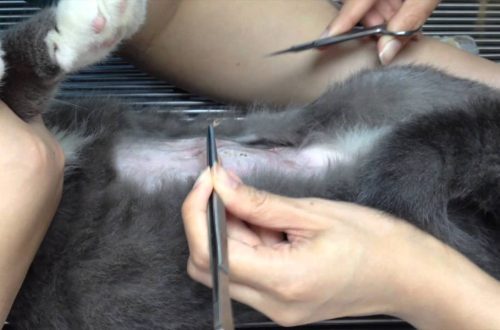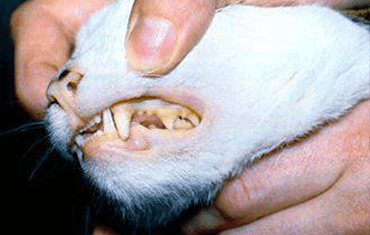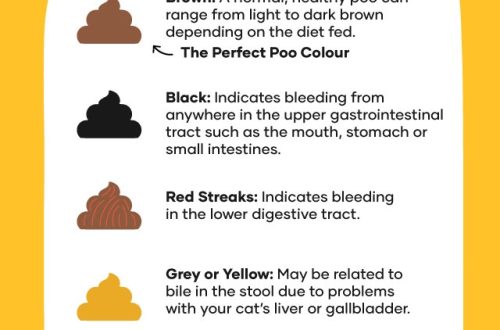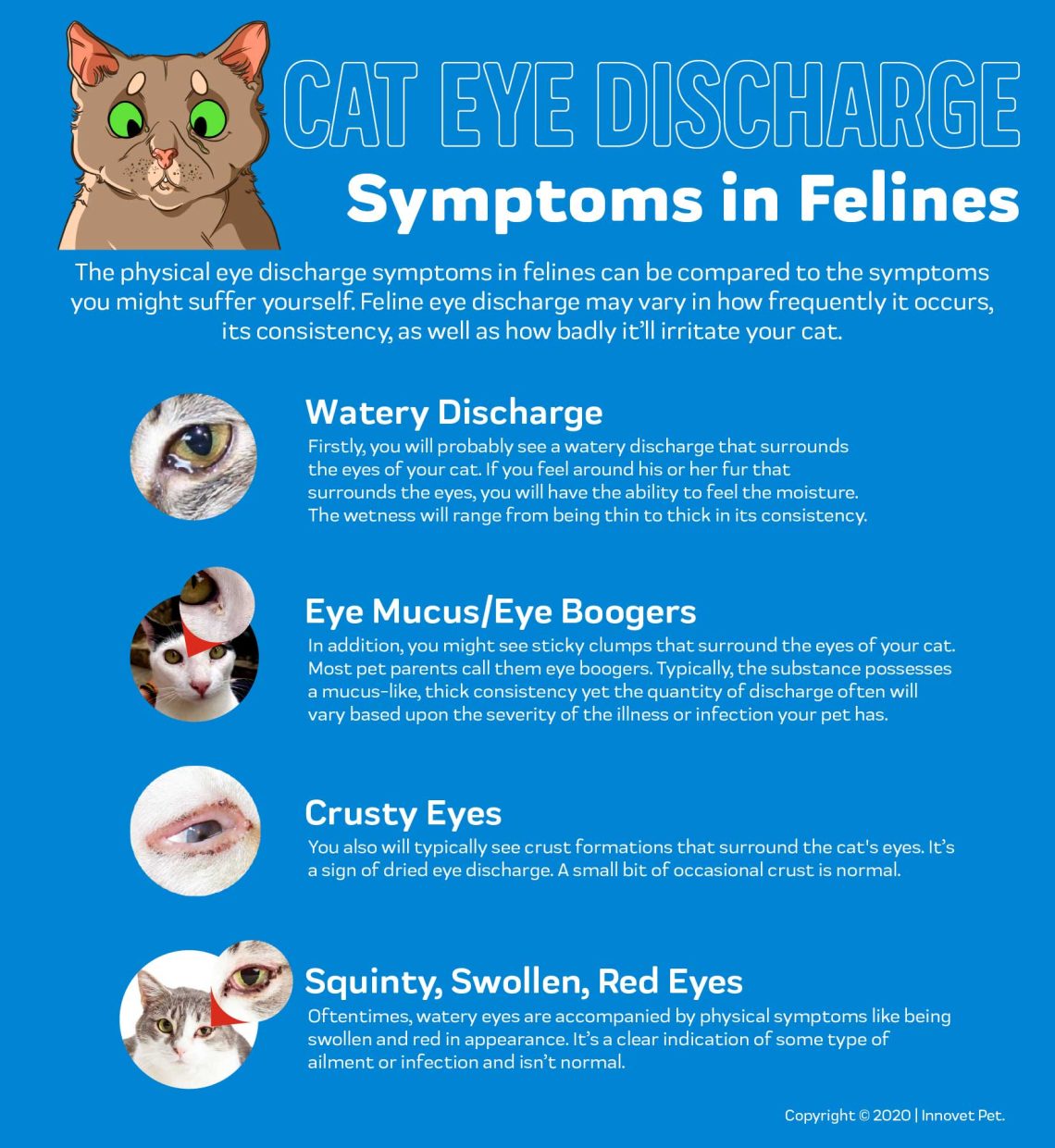
Discharge in cats – types and causes
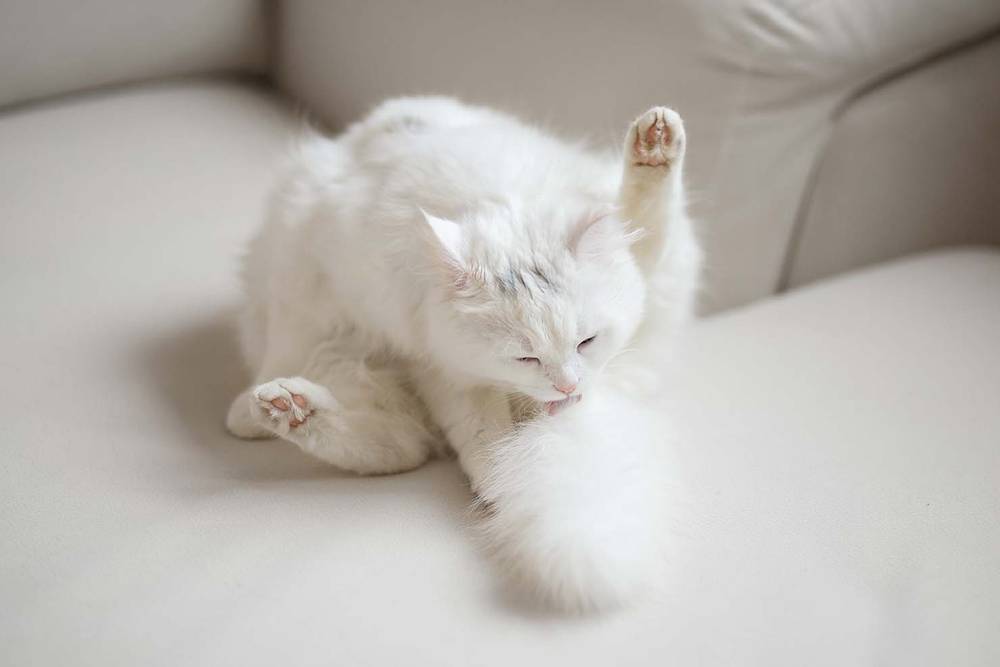
Contents
Discharge in cats: the main thing
Vaginal discharge is quite common, with older, unneutered cats at risk.
Allocations can talk about a very diverse disease, but most often about inflammation in the uterus.
If you see that any liquid is flowing from under your cat’s tail, then this is an occasion to immediately visit a doctor to find out the cause, without help the cat may die.
What are the discharges?
Most often, “discharge” means the detection of liquids of different colors and textures in a pet under the tail. The most noticeable character of the discharge to the eye of the owner is the color.
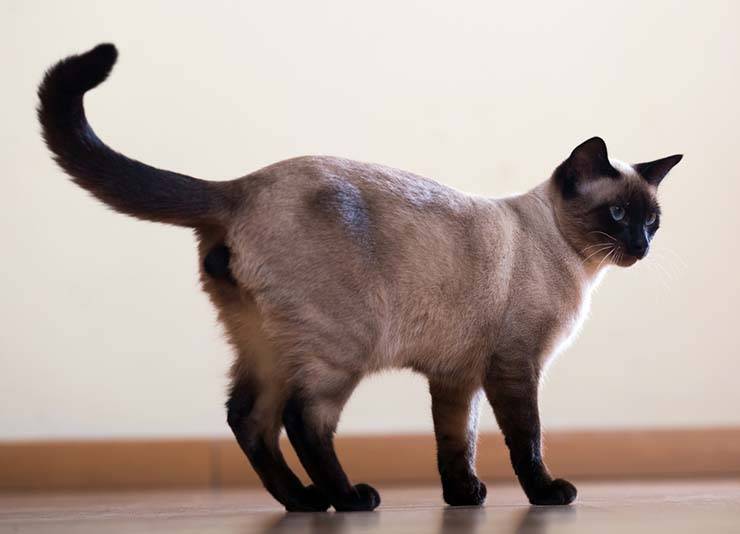
Red (bloody) discharge
Red spotting in a cat is characterized by the presence of blood or pure blood in them. Similar allocations can be found in many cases:
Pyometer / hematometer;
The beginning of childbirth;
Pathology of childbirth;
Violation of blood clotting;
Oncology;
Operations on the uterus;
Uterine/bladder injury.
Scanty spotting in a cat just before delivery or after surgery on the uterus (eg, sterilization) is most often a normal variant and should stop in a short time on its own, without treatment. Abundant discharge, as well as discharge that lasts more than a few hours or is accompanied by poor health of the pet, will speak of a pathological process. If the cat is pregnant, bleeding requires urgent examination and ultrasound in a veterinary clinic, delay threatens the life of the cat and kittens. In adult unneutered cats, uterine inflammation often occurs. If the cervix is open at this moment, then abundant reddish discharge with a smell can be observed. When the cervix is closed, no discharge will be visible. Spotting in a cat during estrus will also indicate an inflammatory process. Bleeding disorders are mainly found when cats are poisoned with rodenticides due to eating poisoned mice. Tumor processes in the reproductive organs will often be accompanied by spotting.
White and yellow discharge
Main pathologies:
Pyometer/Hydrometer;
Vaginitis;
Chronic endometritis.
White cloudy discharge (or more often yellow) will most likely indicate a purulent origin. Basically, they can be observed with purulent inflammation of the uterus of an open type, that is, pyometra. Somewhat less common is such a pathology of the uterus as a hydrometer. It occurs mainly after chronic endometritis, with an open type it will appear as white, slightly transparent discharge. Vaginitis and chronic endometritis are rare in cats, but scanty white or yellowish discharge is also possible. Small yellow discharge in a cat after childbirth may be a variant of the norm, but if there is a lot of discharge, an ultrasound scan is necessary.
Transparent highlights
Small clear discharge can be observed during estrus. Most often, due to the cleanliness of cats, no traces can be found, and this will also be the norm. Just before delivery and during childbirth, a clear, possibly slightly cloudy, liquid also begins to stand out. It helps kittens move more smoothly through the cat’s birth canal.
Brown discharge
Most often, the discharge turns brown due to gore, that is, initially their color was red, but the owners discovered this much later. Here the reasons will be the same as with spotting. Sometimes brown discharge under the tail is feces from diarrhea in cats.
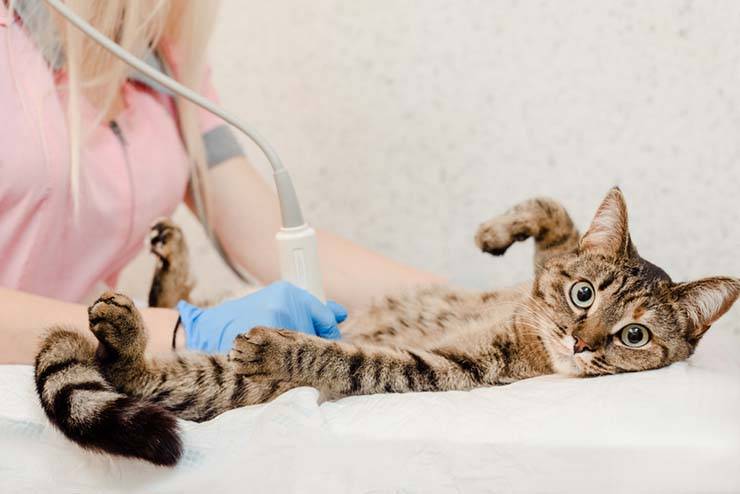
Discharge from a spayed cat
Bloody discharge in a freshly spayed cat is possible in some cases, small spots of blood can be noted for the first few hours after surgery. If the discharge lasts longer or their volume increases, this is a reason to return back to the clinic. In all other cases, a sterilized cat should not have any effusions.
Discharge during estrus
In most cases, during estrus in a cat, owners do not find any traces at all. Scanty, clear, odorless discharge is a variant of the norm. There is no normal blood or other secretions in a cat during estrus. If the discharge is different from transparent, this indicates some serious illness and requires an urgent examination by a doctor.
Discharge during pregnancy
During pregnancy, there should be no special discharge. Very scanty white or clear discharge in a pregnant cat is most often normal. Abundant spotting requires examination by a doctor. If a cat has purulent discharge, in no case should treatment be started at home. Lack of urgent care can lead to the death of kittens and even the cat itself.
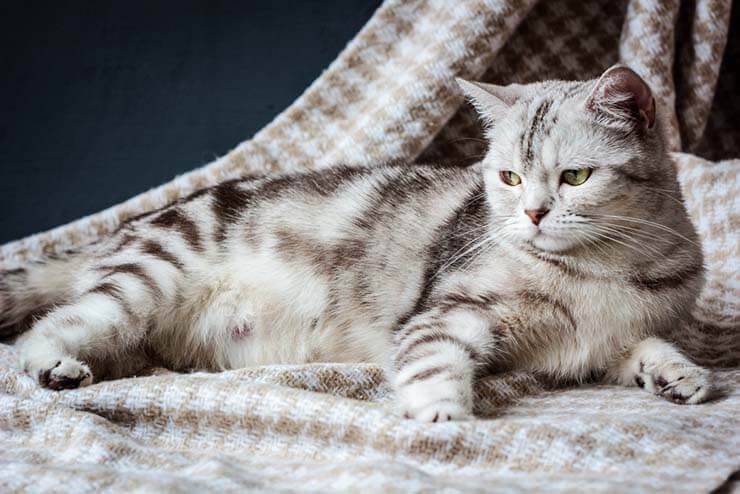
Discharge after childbirth
Scanty white discharge in a cat after childbirth, which quickly passes, is not something terrible. Also, after a successful birth, a dark green discharge is most often seen in a cat, which can continue for several more days. If the discharge after childbirth is bloody, purulent, has an unpleasant odor, then this may indicate various pathologies in the cat, such as inflammation of the uterus, retained placenta, or even the remaining unborn kittens.
Possible pathologies
Pyometra
Pyometra is otherwise called purulent inflammation of the uterus. It is believed that this is a hormone-dependent disease. In most cases, it will be observed in older, unneutered cats. It flows in open and closed form. This is the most common cause of discharge.
Symptoms
With an open form of pyometra, that is, when the cervix is open, there will be abundant cloudy white, yellow, red or brown discharge with a characteristic odor. Since the pus drains, the cat does not become seriously intoxicated, and she can behave as usual. With a closed form, pus has no outlet, and the waste products of bacteria are absorbed into the bloodstream, causing intoxication. Allocations with this form are not detected, and the pet will be lethargic, will refuse to eat, but at the same time, her thirst, on the contrary, will increase.
Diagnostics
The diagnosis is made on the basis of the nature of the discharge, the condition of the pet and ultrasound data. According to the clinical analysis of blood, an acute inflammatory process will be noted.
Treatment
The treatment of choice is surgical removal of the uterus and contents and the ovaries. Conservative treatment consists in the use of antibiotics, hormonal drugs, droppers. Treatment without removal of the uterus with pus is often doomed to failure. Even if the amount of pus decreases and the inflammation goes away, a relapse should be expected after the next estrus.
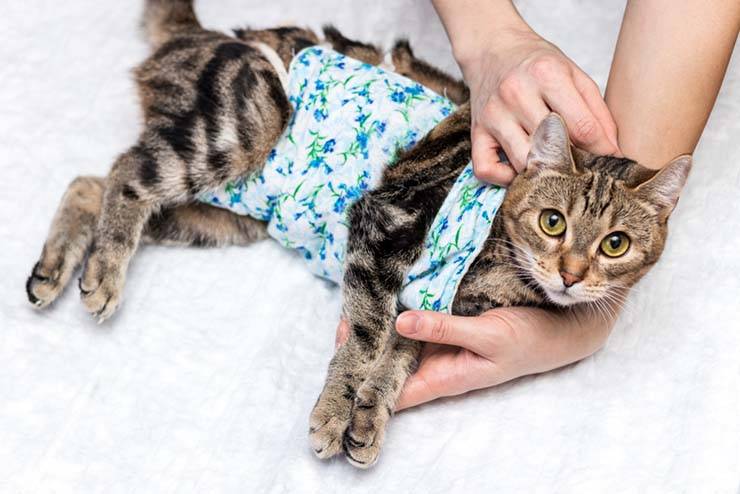
Hematometer
A hematometra is a collection of blood in the uterine cavity. Most often caused by changes in the structure of the endometrium due to hormonal disorders in the body.
Symptoms
Characteristic symptoms are discharge of a bloody color without oppression of general well-being at the onset of the disease. With a closed form, there may be no discharge. In advanced cases, an unpleasant odor joins the discharge, the color changes to a darker, cloudy one. The cat may begin to feel unwell. Sometimes such discharge from the uterus can be confused with discharge from the urethra in a cat.
Diagnostics
Diagnosis is also based on clinical signs and ultrasound findings. According to ultrasound, it is impossible to say with certainty about the non-purulent nature of the contents in the uterus.
Treatment
The treatment of choice is also surgical due to the risk of recurrence with medical treatment alone. Without treatment, pathogenic flora begins to multiply in the lumen of the uterus, and the disease passes into pyometra.
hydrometer
Hydrometer is most often a complication of chronic endometritis. It can also occur with pathological compression of the uterus and the impossibility of discharge of physiological fluids. Compression may be due to the formation of adhesions due to a long-standing operation or due to a tumor process in this area. The hydrometer is characterized by the accumulation of serous exudate in the uterine cavity.
Symptoms
Allocations can be transparent or whitish, the volume is small. Most often there will be no deviations in the state of the cat. Such discharge can be confused with normal discharge in a cat during estrus.
Diagnostics
Ultrasound is required to diagnose hydrometers, but it is not always possible to distinguish serous fluid from blood and pus. According to the result of a clinical blood test, acute inflammation will most often be absent.
Treatment
A conservative approach to treatment may be used, especially in cats of breeding value. Treatment consists in the use of antibiotics and hormonal drugs. An operative approach is preferable in order to eliminate the risk of the condition turning into purulent inflammation of the uterus.
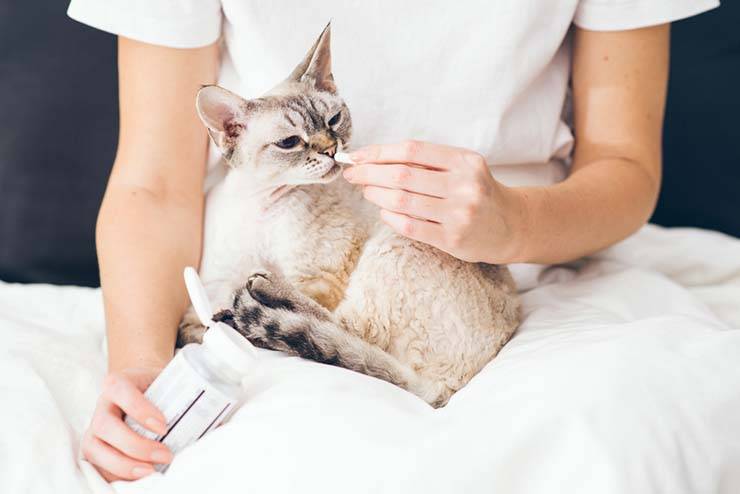
Vaginitis
Inflammation of the vagina is quite rare in cats. It can occur due to infection or the transition of inflammation from surrounding tissues.
Symptoms
The main symptom will be discharge cloudy white, yellowish, possibly with blood. The general condition of the cat is most often not changed. Possible frequent urination and increased licking in this area.
Diagnostics
The diagnosis can be established according to clinical symptoms, the absence of changes in the uterus according to the result of ultrasound. It is possible to perform vaginal cytology to confirm the inflammatory process. With the help of urine sampling by cystocentesis and its subsequent sowing, it is possible to exclude the inflammatory process in the bladder, to which the symptoms are also similar.
Treatment
Treatment in mild cases can be local in the form of washing the vagina with antiseptic solutions. In more severe cases, antibiotics are prescribed systemically.
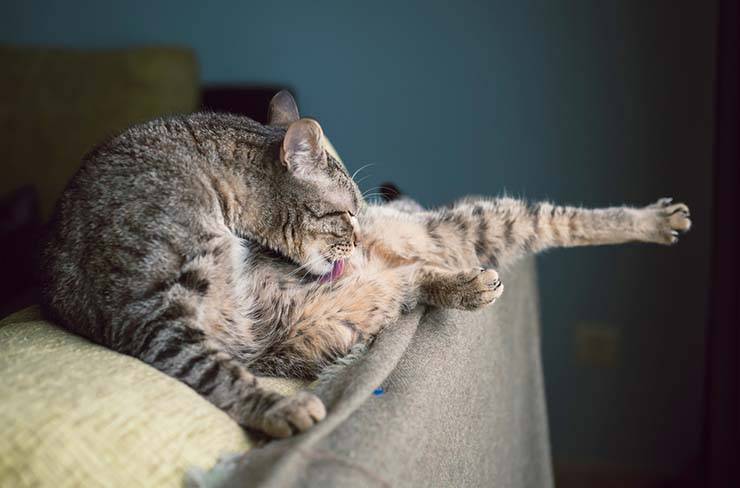
Tumors
Tumors in the uterus are not common. They are more common in older cats than in younger ones. Both benign and malignant formations are possible.
Symptoms
In the early stages, there are likely to be no symptoms. It is possible to detect a benign tumor by chance during a routine examination, since with its small size it will not cause discomfort to the cat. If the tumor grows quickly, it can compress the surrounding organs, especially the intestines, which will be manifested by problems with defecation. With malignant tumors, there will also be no symptoms at first. But without timely diagnosis and treatment, such tumors can quickly grow and open. The opened tumor begins to bleed, which will be manifested by spotting. Then the tumor is seeded with foreign bacteria, pus appears.
Diagnostics
Most often, the tumor can be initially detected using ultrasound. Sometimes, to clarify its size and location, computed tomography is required. To find out about the origin of the tumor, a cytological or histological examination is performed. An x-ray or computed tomography of the chest cavity, ultrasound of the abdominal cavity is also performed to exclude the presence of metastases.
Treatment
Surgical removal of the uterus is always preferable if the tumor has not grown into the surrounding tissues. According to the result of histological examination, the need for chemotherapy is determined.
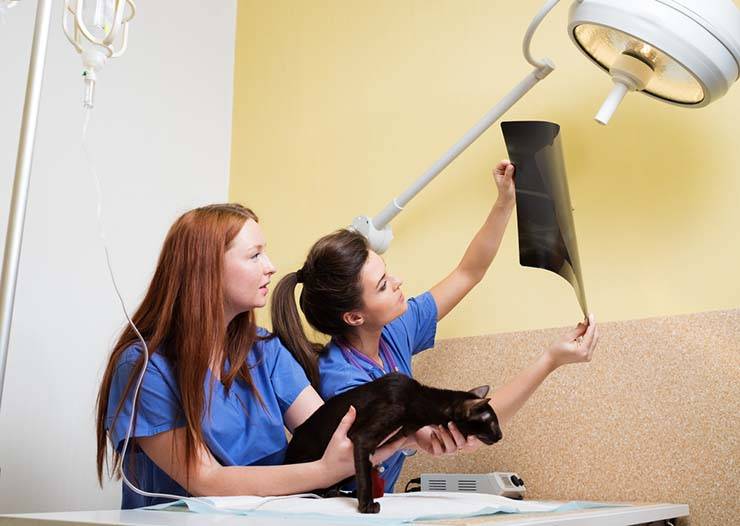
Injuries
Injuries to the uterus are not common, but the bladder is prone to bruising and tearing. Most often, injuries occur due to a cat falling from a great height.
Symptoms
Bloody discharge can be observed with uterine injuries. If the cat’s bladder is bruised, blood will come out of the urethra. The condition of the cat will depend on other injuries sustained in the fall.
Diagnostics
Diagnostics should be carried out comprehensively. X-ray examination, ultrasound, blood tests are carried out. It is necessary to exclude ruptures of internal organs, the presence of free fluid.
Treatment
Bruises are treated with anti-inflammatory therapy, and ruptures require surgery to heal.
Bleeding disorders
A bleeding disorder is characterized by spontaneous bleeding. Most often in cats it will be associated with eating rodenticide-poisoned rats.
Symptoms
You can notice in a cat incessant bleeding in the gums, vomiting with blood, bloody discharge under the tail, bruises on the body. Without immediate assistance, the cat will quickly become lethargic and may die.
Diagnostics
Diagnosis is based on history, whether the cat may have eaten mice or had access to the poison itself. According to the result of a clinical blood test, anemia, a decrease in the number of platelets, will be noted. The coagulogram (blood clotting ability) is also evaluated.
Treatment
The antidote to such poisoning is vitamin K1. At the beginning, it is administered to the animal under stationary supervision, after stabilization it is administered at home.




